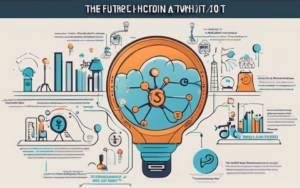The modern workplace is constantly evolving, driven by the rapid advancement of emerging technologies. Staying ahead of the curve requires a proactive approach to workforce training that equips employees with the skills and knowledge needed to navigate this dynamic landscape.
Preparing Your Workforce for Emerging Technologies
The digital revolution has fundamentally reshaped the way we work, and this transformation continues to accelerate.
The Importance of Adaptability in the Modern Workplace
The Rapid Pace of Technological Advancement
New technologies are emerging at an unprecedented pace, disrupting industries and creating new opportunities. Artificial intelligence (AI), automation, blockchain, and the Internet of Things (IoT) are just a few examples of technologies that are transforming businesses and creating new demands for skilled workers.
The Impact of Emerging Technologies on Industries
The impact of these technologies is felt across all industries, from manufacturing and healthcare to finance and retail. Companies are adopting new tools and processes to improve efficiency, enhance customer experiences, and gain a competitive edge.
Identifying Skills Gaps and Training Needs
To prepare your workforce for the challenges and opportunities presented by emerging technologies, it’s crucial to identify existing skills gaps and anticipate future training needs.
Conducting Skills Audits
A comprehensive skills audit provides valuable insights into the current capabilities of your workforce. This assessment should evaluate the skills, knowledge, and experience of your employees in relation to the evolving needs of your organization.
Analyzing Industry Trends and Future Skills Requirements
Staying informed about industry trends and future skills requirements is essential for proactive workforce planning. Researching emerging technologies and their impact on your industry will help you anticipate the skills your employees will need to succeed in the future.
Developing a Comprehensive Training Strategy
Once you have identified skills gaps and future training needs, it’s time to develop a comprehensive training strategy that addresses these requirements.
Upskilling and Reskilling Programs
Upskilling programs focus on enhancing existing skills, while reskilling programs equip employees with new skills that are relevant to emerging technologies. These programs can be delivered through a variety of methods, including online courses, workshops, and mentoring programs.
Mentorship and Coaching Initiatives
Mentorship and coaching initiatives provide employees with personalized support and guidance as they develop new skills. Pairing employees with experienced mentors or coaches can accelerate their learning process and help them apply their newfound knowledge to real-world situations.
Access to Online Learning Platforms
Online learning platforms offer a flexible and accessible way for employees to access training resources. These platforms provide a vast library of courses and materials covering a wide range of topics, including emerging technologies, data analytics, and digital marketing.
Fostering a Culture of Continuous Learning
A culture of continuous learning is essential for a future-ready workforce.
Encouraging Experimentation and Innovation
Create a workplace environment that encourages employees to experiment with new technologies and ideas. This fosters a culture of innovation and helps employees develop the skills they need to adapt to changing demands.
Promoting Collaboration and Knowledge Sharing
Encourage employees to share their knowledge and experiences with each other. This can be achieved through knowledge-sharing sessions, online forums, or peer-to-peer mentoring programs.
Providing Opportunities for Professional Development
Invest in professional development opportunities for your employees, such as conferences, workshops, and certification programs. This helps them stay up-to-date on the latest industry trends and technologies.
Embracing Technological Change
To thrive in the digital age, companies must embrace technological change and integrate new technologies into their operations.
Adopting New Technologies and Tools
Invest in new technologies and tools that can enhance efficiency, improve productivity, and create new opportunities. This may involve adopting cloud computing, data analytics platforms, or artificial intelligence tools.
Leveraging Automation and Artificial Intelligence
Automation and AI can help streamline processes, reduce costs, and improve decision-making. Implement these technologies strategically to free up employees to focus on more strategic tasks.
Staying Informed about Industry Best Practices
Stay abreast of industry best practices and emerging trends by attending industry events, reading industry publications, and connecting with thought leaders. This will help you identify new opportunities and adapt to changing industry standards.
A Future-Ready Workforce
A skilled and adaptable workforce is a valuable asset in the ever-changing digital landscape. By investing in workforce training and fostering a culture of continuous learning, you can equip your employees with the skills and knowledge they need to thrive in the future of work.
Investing in workforce training is not just about preparing for the future, it’s about ensuring the long-term success of your organization. A future-ready workforce is a competitive advantage, allowing you to embrace new opportunities, overcome challenges, and stay ahead of the curve in the digital age.




